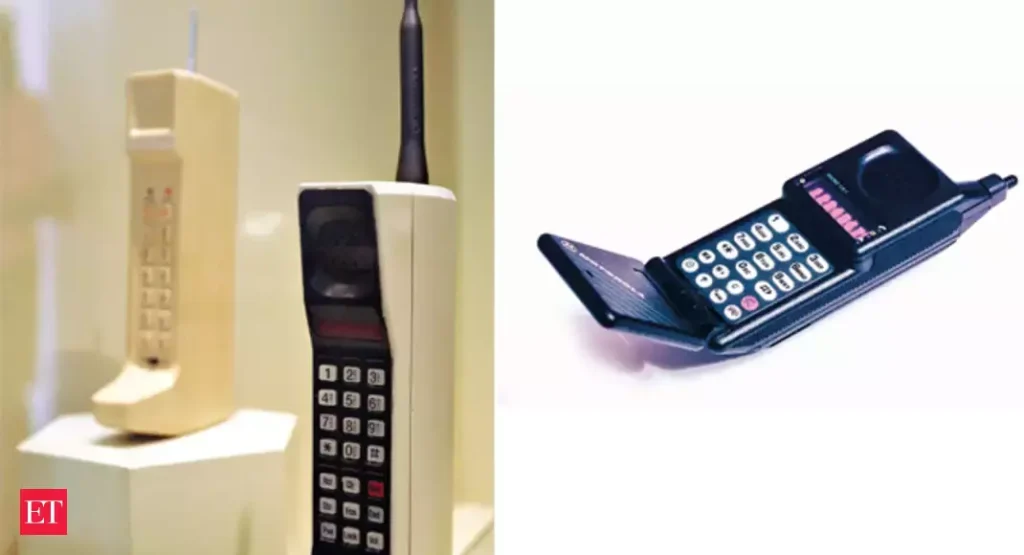Charting the Journey: The Evolution of Smartphones From Brick to Pocket-Sized Powerhouses
Smartphones have become an indispensable part of our daily lives, offering a plethora of features and functionalities that were once unimaginable in a pocket-sized device. But how did we get here? Let’s take a trip down memory lane and explore the fascinating evolution of smartphones over the past few decades. From the first mobile phone with a built-in calculator to the latest models with facial recognition technology and foldable screens, the evolution of smartphones has been driven by innovation and technological advancements. Today, smartphones are more than just a communication device; they are an extension of ourselves, enabling us to stay connected and productive no matter where we are.

When mobile phones first hit the scene, they were far from the sleek, pocket-sized devices we have today. These “brick” phones were clunky and heavy, with limited capabilities such as making phone calls and sending text messages. They were also quite costly, and only a select few could afford to own one. Despite their limitations, these early mobile phones were considered a status symbol and a significant technological advancement at the time. Little did we know that these brick phones were just the beginning of a revolution that would change the way we communicate and interact with the world around us.
As the 1990s rolled around, the next big thing in mobile technology arrived: the first smartphones. These early devices were bigger and more powerful than their brick phone predecessors, and could run basic applications such as calculators and calendars. However, they were still quite pricey and not yet accessible to the masses. Despite this, they laid the foundation for the smartphones we know and love today, paving the way for even more advanced capabilities and applications to come.
The year 2007 marked a turning point in the history of smartphones with the launch of the first iPhone by Apple. It revolutionized the industry by introducing a touch screen interface and innovative features such as internet browsing, music playback, and a built-in camera. This smartphone was significantly more affordable and accessible to a wider audience than previous models, creating a surge in demand for smartphones. This led to rapid development and competition among tech giants to bring out more advanced and sophisticated models with features like fingerprint sensors, voice recognition, and facial recognition, among others, further changing the way we use and interact with our phones.
Other companies quickly followed Apple’s lead, releasing their own smartphones with similar features and capabilities. This sparked a new era of innovation, with phone manufacturers competing to create the latest and greatest devices. The introduction of app stores like the Apple App Store and Google Play Store allowed users to download a range of apps for their phones, from social media and games to productivity tools and news apps. This created a new market for developers, who could now create apps for a wide audience, leading to the creation of new startups and tech giants.
With the increasing popularity of smartphones, their capabilities have also expanded significantly. Today’s smartphones are more powerful than ever, able to handle complex tasks such as video editing and gaming. Moreover, many models are equipped with advanced camera systems that can capture stunning images and videos. This has led to a decline in sales of traditional digital cameras, as more and more people opt to use their smartphones as their primary camera. With their ever-evolving technology, smartphones have become an essential tool for both personal and professional use, shaping the way we communicate, work, and entertain ourselves.
Despite the convenience and benefits of smartphones, there are also challenges associated with their use. With the constant availability of internet and communication, many people find themselves struggling with smartphone addiction and the need to manage their screen time. Furthermore, as smartphones collect and transmit personal data, there are privacy concerns regarding the use and protection of this data. It’s important for users to be aware of these potential risks and take steps to manage their smartphone use and protect their personal information.
Smartphones have become an integral part of our daily lives, transforming the way we communicate, work, and socialize. Despite the challenges of screen addiction and privacy concerns, they have revolutionized the way we access information and interact with the world around us. Looking to the future, it’s certain that smartphones will continue to evolve, bringing even more innovative features and capabilities that we can’t even imagine yet. From augmented reality to artificial intelligence, the possibilities are endless, and smartphones will undoubtedly remain a key tool in shaping our digital lives for years to come.
Image Source : The Economic Times







